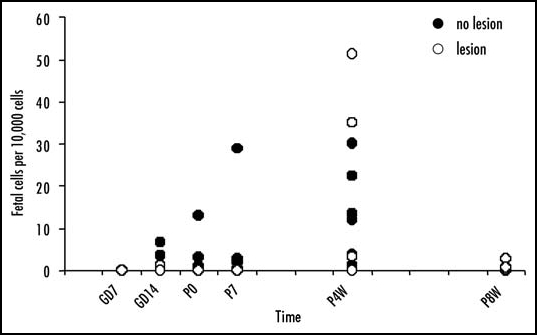Figure 3.

Time course of fetal cell engraftment and persistence in the mouse brain. Adult female mice received intraventricular injection of the excitotoxic NMDA to produce a diffuse brain lesion or were untreated. The mice were crossed with adult male enhanced green fluorescent protein (EGFP) transgenic Green Mice. Fetomaternal microchimerism in the brain was assayed at various time points: gestational days (GD) 7 and 14, the day of parturition (P0), and at seven days (P7), four weeks (P4W) and eight weeks (P8W) post partum (n = 3–8 per group at each time point). The number of fetal cells relative to total cells present in a brain block centered about the site of the injection was quantified by real-time PCR for the EGFP gene in genomic DNA. Procedures were as previously described.49 There are great individual differences, however, in those mothers in which fetal cells were detected in the brain, the number of fetal cells detected in the brain increases by four weeks post partum and declines again by eight weeks post partum. Overall, in those mothers in which fetal cells persist at four weeks and eight weeks post partum, there are greater numbers of fetal cells in the lesioned brains.
